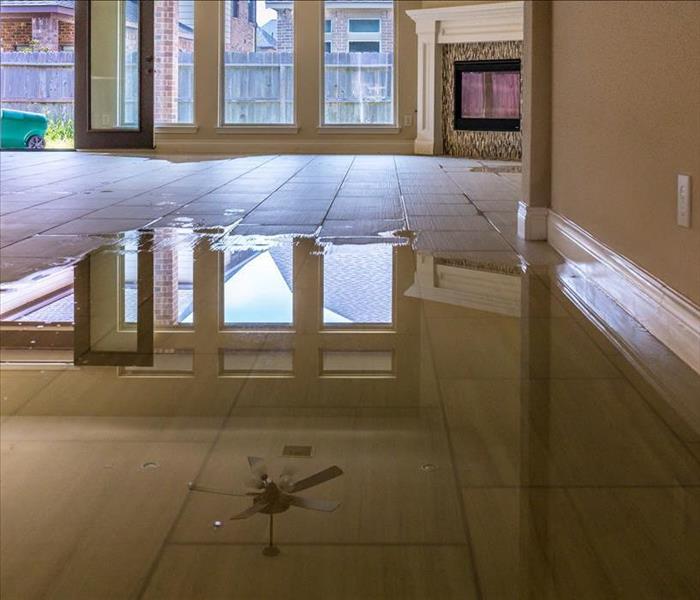Protecting Your Home After a Flood
3/8/2021 (Permalink)
 By knowing the best steps to protect your home after a flood, you and your loved ones can stay safe as you return to normal living conditions.
By knowing the best steps to protect your home after a flood, you and your loved ones can stay safe as you return to normal living conditions.
Even though cleaning up after a flood may seem like a formidable task, it is important to have a plan in place to tackle this undertaking. By knowing the best steps to protect your home after a flood, you and your loved ones can stay safe as you return to normal living conditions.
Prioritize Your Safety
Before you can start cleaning, it is important to first mitigate any safety hazards. There is a high chance that the water is contaminated, and the structure is unstable. To help prioritize your safety:
- Shut off gas and electricity before to the flooded area before entering the house.
- Examine the building’s structure by checking the foundation for any cracking and/or undermining in addition to the walls, floors, and windows.
- Have an electrician look over the electrical system.
- Wear appropriate clothing protection including rubber boots, waterproof gloves, and a safety mask, or googles.
- Have on hand a first aid kit for any minor injuries that occur.
Dealing with Insurance Claims
Before the cleaning process begins, there are steps you should take to make sure the insurance process can go as smooth as possible.
- Take pictures or videos of everything before you start cleaning! This is crucial for insurance claims and tax deductions.
- Record all of your expenses.
- Check in with your insurance company to see what their requirements are for a claim.
- Freeze any flooded books and papers before you have time to work with them. For the best chance of preservation, place waxed paper between the layers and place them inside plastic bags before going into a freezer.
The Cleanup Process
During the cleanup process, it is important to both cleaning and disinfect household items.
Step by Step Clean Up:
- Remove any standing water. While obvious, no cleaning can get done with standing water in the way. You can use pails or pumps to remove, and then use a wet/dry shop vacuum cleaner.
- Remove soaking wet and/or contaminated materials. Try to place things in large garbage bags and bring them outside the home. Depending on local regulations, something may need to be thrown out if it is contaminated with sewer water. Some larger furniture items may also be damaged beyond repair and need to be thrown out.
- Shovel out mud before it dries. While it may be treacherous, it is important to remove all of the mud and silt inside the house. A house may be used for this removal process.
- Clean and dry the walls. It is important to be fast, thorough, and safe in this process. Walls dry from the inside out and the interior parts of the walls must be thoroughly dried.
- Remove interior wall finishes to release water and mud from the cavities. Wall finishes that reach up to the high-water line should be thrown away.
- Remove all wall insulation that has been wet as it is contaminated.
- To remove mud, hose down the walls before they fully dry and disinfect them using some method of chlorine bleach.
- A moisture meter can be used to check the condition of the walls and when they are ready to re-insulate.
- Clean the floors and woodwork. Floors and other woodwork should be cleaned within 48 hours of the flood. It is very important to avoid any products that contain ammonia.
- For the cleaning process: Use plenty of hot water and scrub the floors with alkali solution (like washing soda). To disinfect, use a bleach solution such as a solution of 1/2 cup chlorine bleach to 1 gallon of water.
- Dry all of the surfaces. Heat and air should be used to surface dry materials within 24 to 48 hours. The continuous circulation of heat should reduce trying time and prevent the growth of any bacteria.
Experts recommend waiting about 6 months before the re-modeling process can begin. If your home has suffered flood damage, we are here to help. Contact our flood damage repair team today!




 24/7 Emergency Service
24/7 Emergency Service